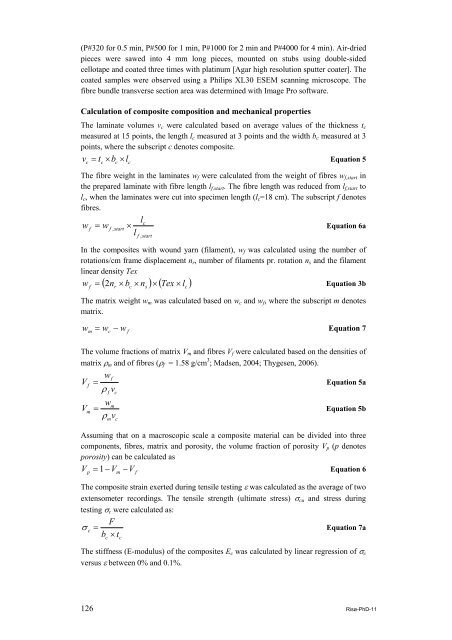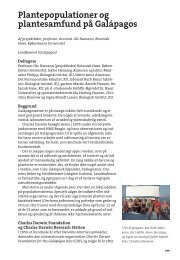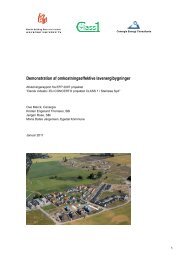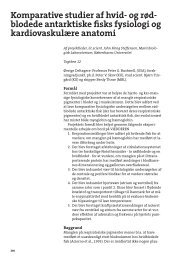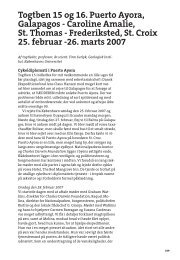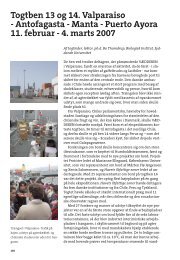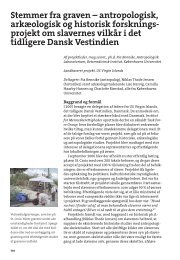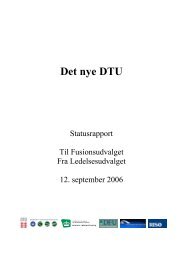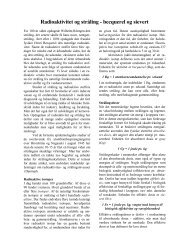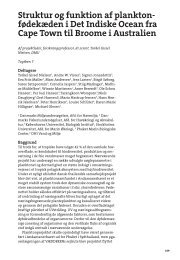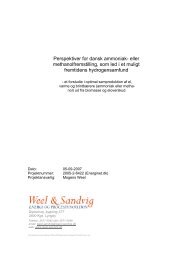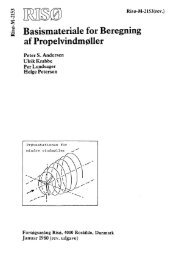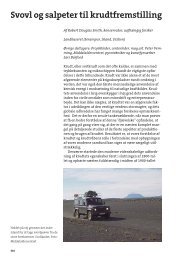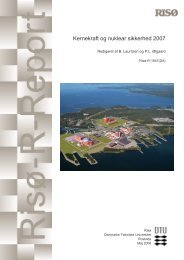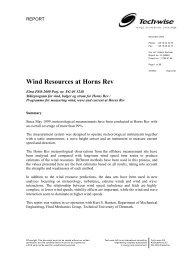Properties of hemp fibre polymer composites -An optimisation of ...
Properties of hemp fibre polymer composites -An optimisation of ...
Properties of hemp fibre polymer composites -An optimisation of ...
Create successful ePaper yourself
Turn your PDF publications into a flip-book with our unique Google optimized e-Paper software.
(P#320 for 0.5 min, P#500 for 1 min, P#1000 for 2 min and P#4000 for 4 min). Air-dried<br />
pieces were sawed into 4 mm long pieces, mounted on stubs using double-sided<br />
cellotape and coated three times with platinum [Agar high resolution sputter coater]. The<br />
coated samples were observed using a Philips XL30 ESEM scanning microscope. The<br />
<strong>fibre</strong> bundle transverse section area was determined with Image Pro s<strong>of</strong>tware.<br />
Calculation <strong>of</strong> composite composition and mechanical properties<br />
The laminate volumes vc were calculated based on average values <strong>of</strong> the thickness tc<br />
measured at 15 points, the length lc measured at 3 points and the width bc measured at 3<br />
points, where the subscript c denotes composite.<br />
v = t × b × lc<br />
Equation 5<br />
c c c<br />
The <strong>fibre</strong> weight in the laminates wf were calculated from the weight <strong>of</strong> <strong>fibre</strong>s wf,start in<br />
the prepared laminate with <strong>fibre</strong> length lf,start. The <strong>fibre</strong> length was reduced from lf,start to<br />
lc, when the laminates were cut into specimen length (lc=18 cm). The subscript f denotes<br />
<strong>fibre</strong>s.<br />
lc<br />
w f = w f , start ×<br />
Equation 6a<br />
l<br />
f , start<br />
In the <strong>composites</strong> with wound yarn (filament), wf was calculated using the number <strong>of</strong><br />
rotations/cm frame displacement nr, number <strong>of</strong> filaments pr. rotation ns and the filament<br />
linear density Tex<br />
w = 2 n × b × n × Tex × l )<br />
Equation 3b<br />
f<br />
( r c s ) ( c<br />
The matrix weight wm was calculated based on wc and wf, where the subscript m denotes<br />
matrix.<br />
w = w − w<br />
Equation 7<br />
m<br />
c<br />
f<br />
The volume fractions <strong>of</strong> matrix Vm and <strong>fibre</strong>s Vf were calculated based on the densities <strong>of</strong><br />
matrix ρm and <strong>of</strong> <strong>fibre</strong>s (ρf = 1.58 g/cm 3 ; Madsen, 2004; Thygesen, 2006).<br />
V<br />
V<br />
w<br />
f<br />
f = Equation 5a<br />
ρ f vc<br />
w<br />
m<br />
m = Equation 5b<br />
ρmvc<br />
Assuming that on a macroscopic scale a composite material can be divided into three<br />
components, <strong>fibre</strong>s, matrix and porosity, the volume fraction <strong>of</strong> porosity Vp (p denotes<br />
porosity) can be calculated as<br />
V = 1 −V<br />
−V<br />
Equation 6<br />
p<br />
m<br />
f<br />
The composite strain exerted during tensile testing ε was calculated as the average <strong>of</strong> two<br />
extensometer recordings. The tensile strength (ultimate stress) σcu and stress during<br />
testing σc were calculated as:<br />
F<br />
σ c =<br />
Equation 7a<br />
b × t<br />
c<br />
c<br />
The stiffness (E-modulus) <strong>of</strong> the <strong>composites</strong> Ec was calculated by linear regression <strong>of</strong> σc<br />
versus ε between 0% and 0.1%.<br />
126 Risø-PhD-11


